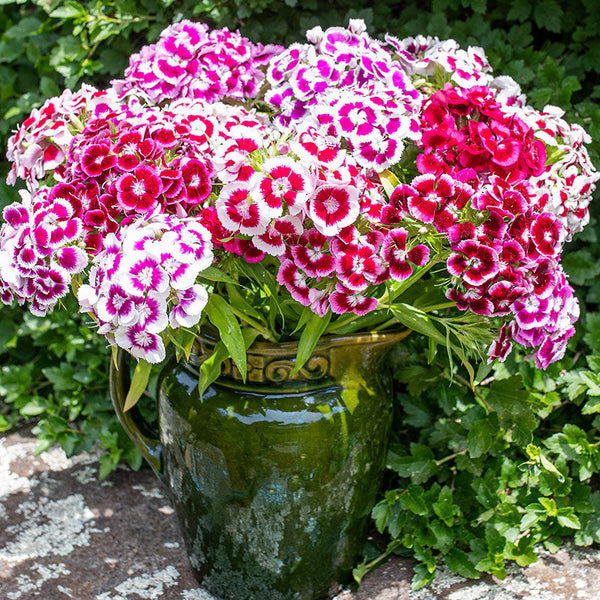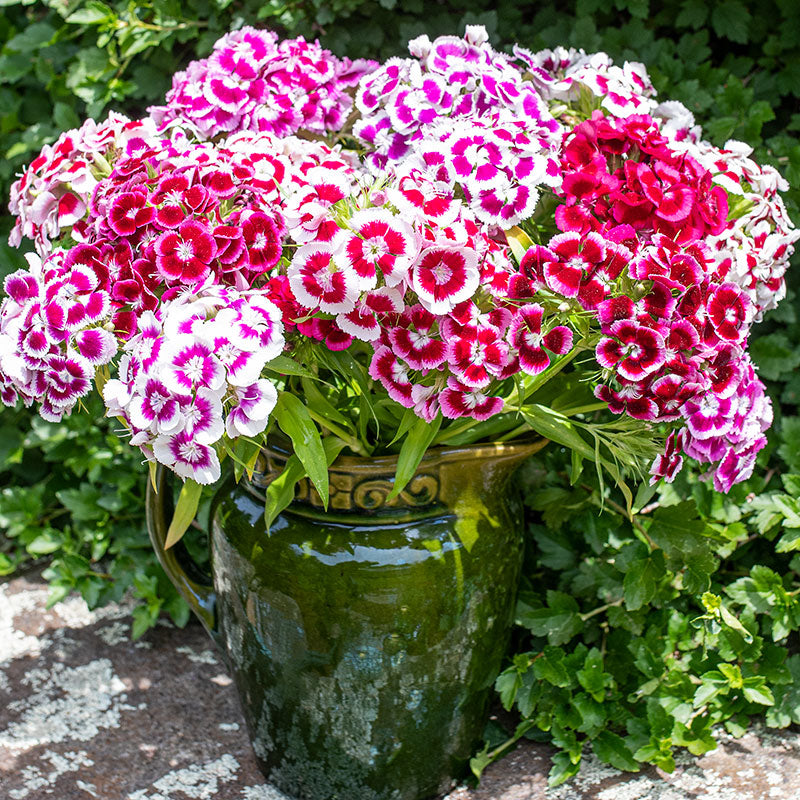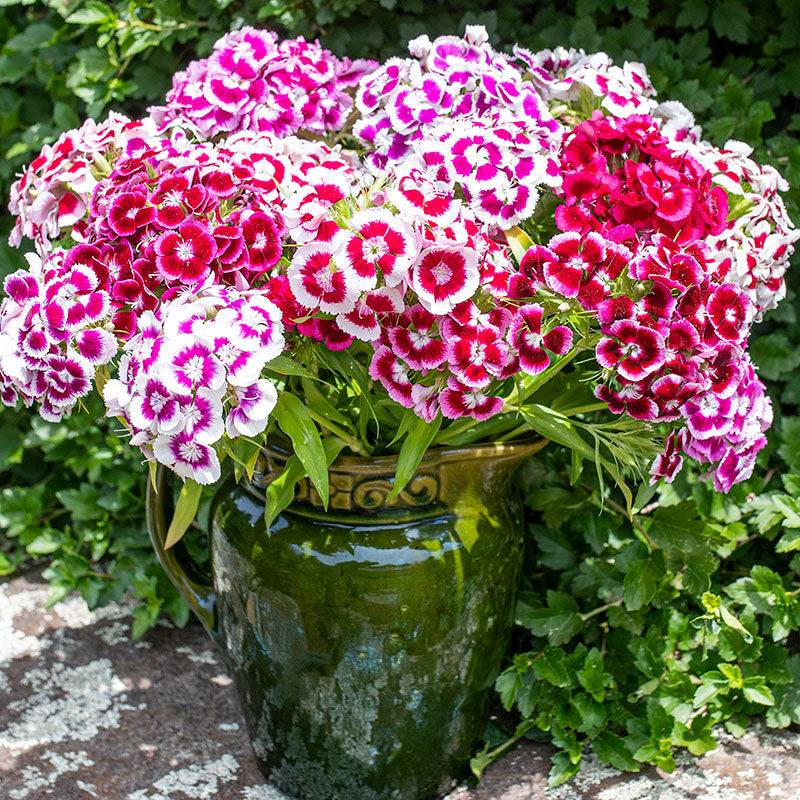SOWING INSTRUCTIONS
Starting Indoors:
6-8 weeks before last frost. Keep at 65-70°F. Once germination occurs keep at 55-65°F.
Starting Outdoors:
Sow spring to mid-summer for blooms the following year.
PLACEMENT & CULTIVATION
Sweet William is a beautiful biennial that attracts butterflies and bees and is deer resistant. Often grown in borders as well as the cutting garden, its edible petals make lovely garnishes for the plate and as salad confetti. Mulch during its first winter, being sure to keep the crowns uncovered. Severe cold, or saturated winter soil may lead to dieback. Cut back after flowering to encourage its somewhat perennial tendencies or allow it to self sow for new seedlings.
Watering Details:
About 1" per week. While somewhat drought tolerant, greater moisture availability will increase blooms.
Soil pH:
Tolerates most soil pH levels, but neutral to alkaline is preferred. If soil is acidic, apply a handful of lime when planting.
Fertilizer:
Apply a low-nitrogen granular, organic fertilizer or 2" of compost in springtime.
Diseases & Pests:
Leaf spots can mar the leaves of Dianthus. Space well apart for good air circulation.
When to Cut for Bouquets:
Harvest when 1/2 of the florets are open.
































